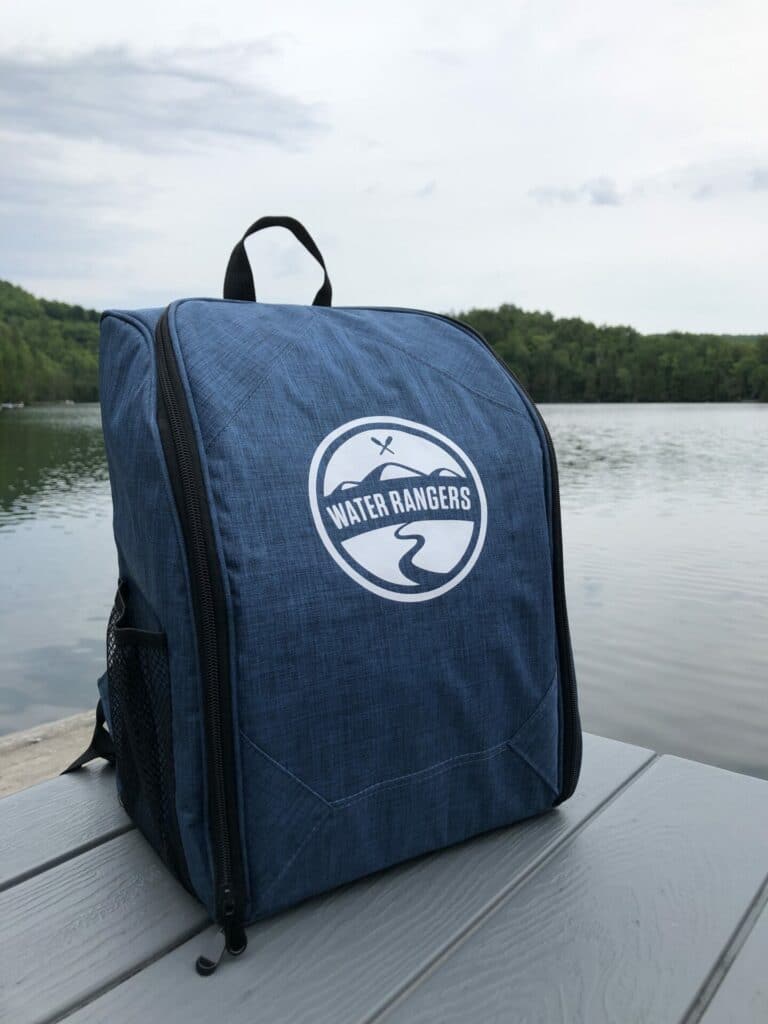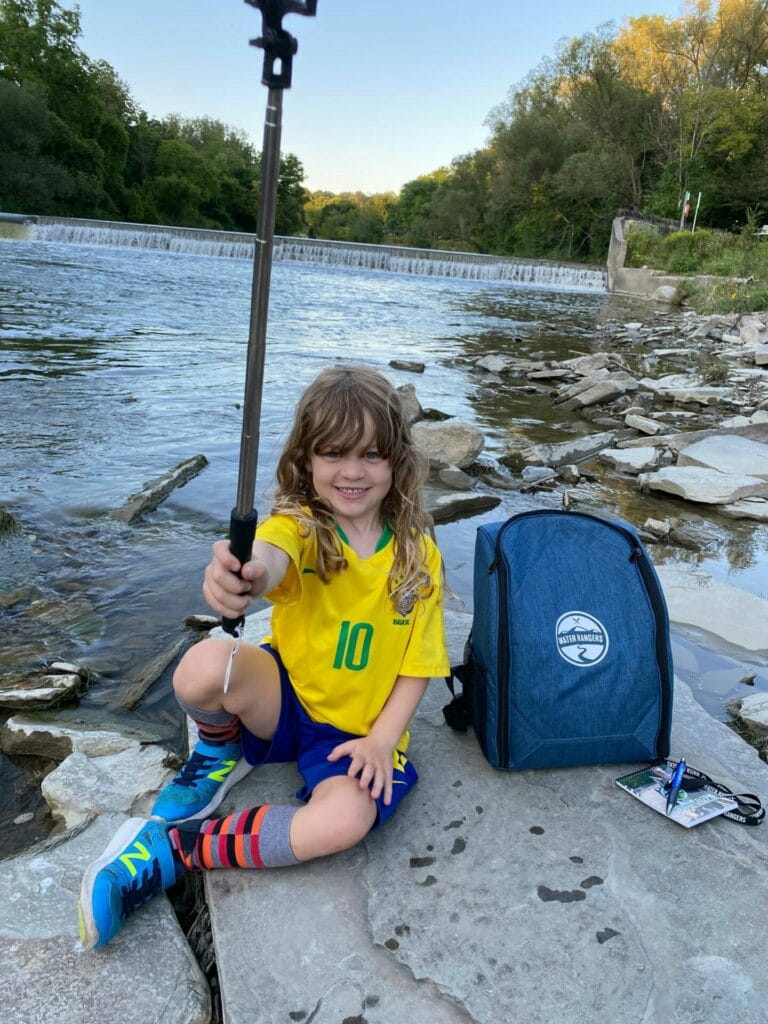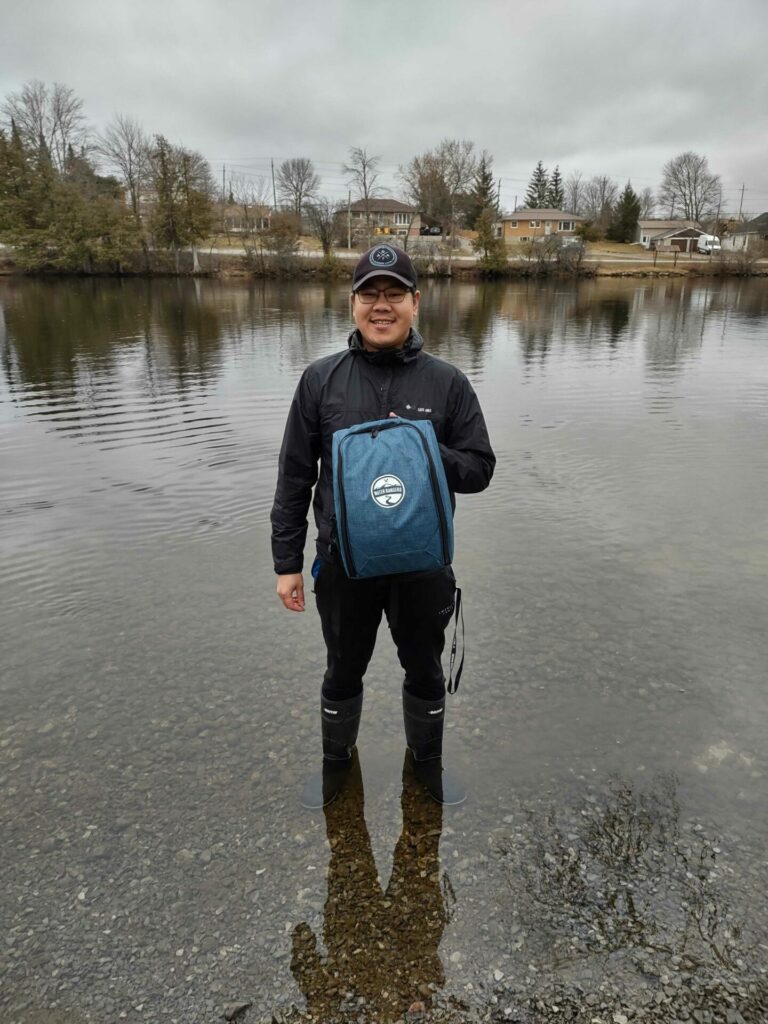How to use the Freshwater Explorer kit
Before you use your equipment, make sure to familiarize yourself with the Water Rangers protocol. This will tell you how to pick the best spots to monitor, and will also tell you how often you should go testing.
Our official testing day is the last Sunday of every month (back-ups are Saturday and Monday of the same weekend). Remember that regular testing is required to create a baseline, so it’s more important for you to test at less sites more frequently than the other way around.
Once you’ve familiarized yourself with where and when to test, it’s time to get going with your kit!
Below, you’ll find an in-depth video explaining how to use the different tools that come with your Freshwater Explorer kit.



1. Get to know your equipment
All of our Freshwater Explorer Testkits contain:
- A field guide, notepad, and pen. You’ll learn everything you need to know about testing with Water Rangers in our field guide, and you can record all of your observations in the notepad provided if you don’t have your phone handy.
- Stickers, badges, and postcards. Find these in the ‘goodie bag’ in your kit’s front pocket, and share them with others!
- A ‘reacher stick’ and a sample cup. Attach your sample cup to your reacher stick to grab water samples from hard to reach places.
- A conductivity meter. This measures the water’s ability to conduct electricity! You can read more about what this means and why it’s important here. Do you have an Ocean Explorer kit? Then you have a salinity meter instead! You can learn more about why it’s important to measure salinity here.
- A thermometer. You can use this to measure air temperature and water temperature.
- 50 teststrips. We include teststrips that measure pH, alkalinity, hardness, and chlorine in all of our kits. These teststrips are super user-friendly, but if you want to learn more about how to use them and how to interpret your results, check out this page.
- A container to dispose of your test strips. Place your used test strips in this container and mail them back to us using the envelope provided- we’ll take care of disposal.
- A secchi disk. Use this to measure clarity. Visit this page to find out how to use your secchi disk, and to find out how to measure secchi depth.
- 30 dissolved oxygen tests. This is probably our most fun, but ‘tricky’ test. You’ll be a pro in no time though! Check out this page to learn more about the parameter and how to test for it.
- A container to dispose of your used dissolved oxygen ampoules. This one is pretty self explanatory, just be careful when you dispose of them since they’re made of glass!
- A secchi disk to measure water clarity and/or water depth.
- Dissolved oxygen tests.
Our Compact Freshwater Explorer kit comes with all of the same tools, except for the secchi disk and dissolved oxygen tests. Want to add these to your testing routine? Visit out online store!
2. Learn how to use your kit
How to use the Freshwater Explorer kit
All of these instructions can be found within the field guide that comes with your kit, too! We definitely recommend reading it from cover to cover.
